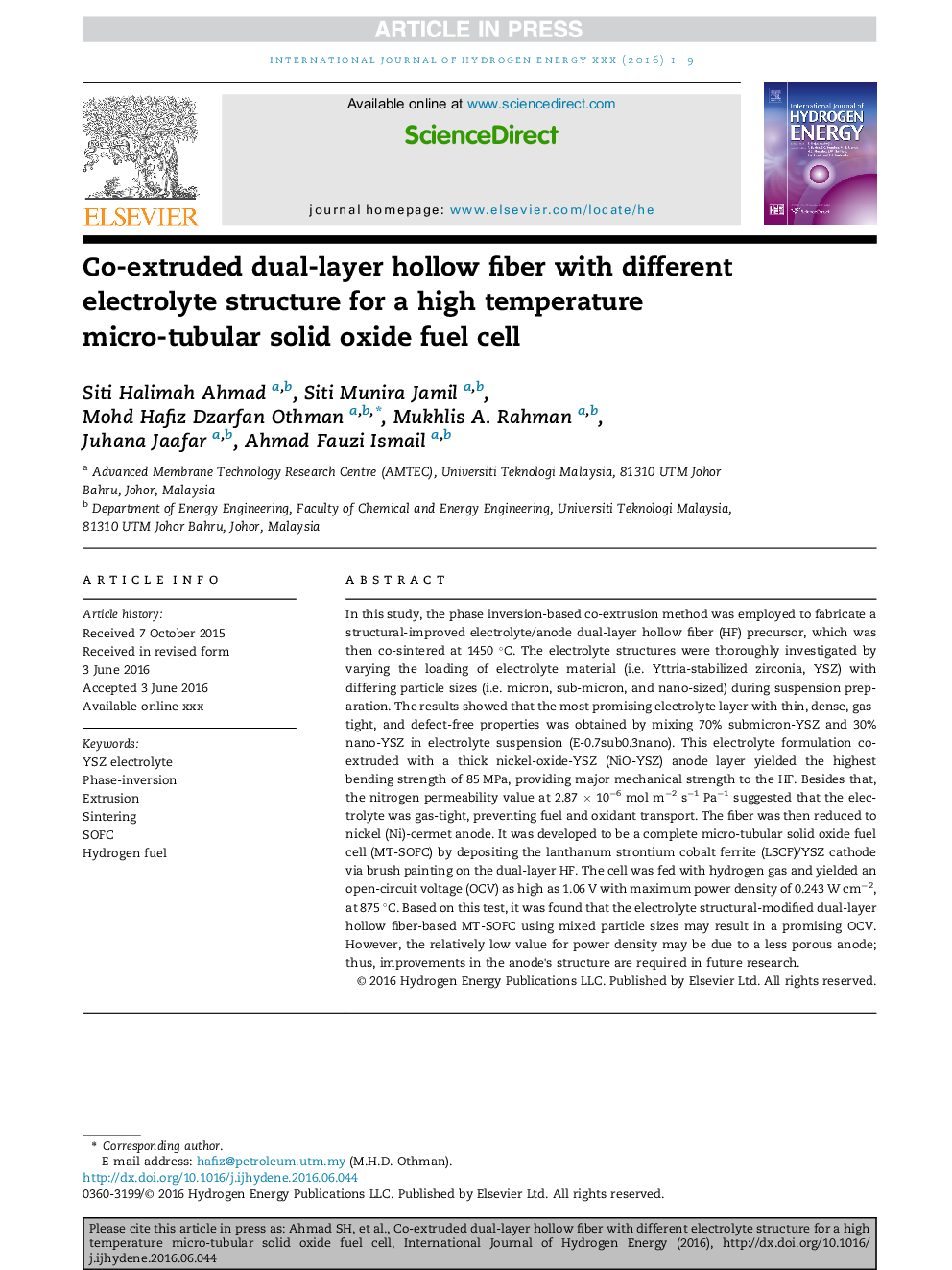| کد مقاله | کد نشریه | سال انتشار | مقاله انگلیسی | نسخه تمام متن |
|---|---|---|---|---|
| 5147837 | 1497363 | 2017 | 9 صفحه PDF | دانلود رایگان |
عنوان انگلیسی مقاله ISI
Co-extruded dual-layer hollow fiber with different electrolyte structure for a high temperature micro-tubular solid oxide fuel cell
دانلود مقاله + سفارش ترجمه
دانلود مقاله ISI انگلیسی
رایگان برای ایرانیان
کلمات کلیدی
موضوعات مرتبط
مهندسی و علوم پایه
شیمی
الکتروشیمی
پیش نمایش صفحه اول مقاله

چکیده انگلیسی
In this study, the phase inversion-based co-extrusion method was employed to fabricate a structural-improved electrolyte/anode dual-layer hollow fiber (HF) precursor, which was then co-sintered at 1450 °C. The electrolyte structures were thoroughly investigated by varying the loading of electrolyte material (i.e. Yttria-stabilized zirconia, YSZ) with differing particle sizes (i.e. micron, sub-micron, and nano-sized) during suspension preparation. The results showed that the most promising electrolyte layer with thin, dense, gas-tight, and defect-free properties was obtained by mixing 70% submicron-YSZ and 30% nano-YSZ in electrolyte suspension (E-0.7sub0.3nano). This electrolyte formulation co-extruded with a thick nickel-oxide-YSZ (NiO-YSZ) anode layer yielded the highest bending strength of 85 MPa, providing major mechanical strength to the HF. Besides that, the nitrogen permeability value at 2.87 Ã 10â6 mol mâ2 sâ1 Paâ1 suggested that the electrolyte was gas-tight, preventing fuel and oxidant transport. The fiber was then reduced to nickel (Ni)-cermet anode. It was developed to be a complete micro-tubular solid oxide fuel cell (MT-SOFC) by depositing the lanthanum strontium cobalt ferrite (LSCF)/YSZ cathode via brush painting on the dual-layer HF. The cell was fed with hydrogen gas and yielded an open-circuit voltage (OCV) as high as 1.06 V with maximum power density of 0.243 W cmâ2, at 875 °C. Based on this test, it was found that the electrolyte structural-modified dual-layer hollow fiber-based MT-SOFC using mixed particle sizes may result in a promising OCV. However, the relatively low value for power density may be due to a less porous anode; thus, improvements in the anode's structure are required in future research.
ناشر
Database: Elsevier - ScienceDirect (ساینس دایرکت)
Journal: International Journal of Hydrogen Energy - Volume 42, Issue 14, 6 April 2017, Pages 9116-9124
Journal: International Journal of Hydrogen Energy - Volume 42, Issue 14, 6 April 2017, Pages 9116-9124
نویسندگان
Siti Halimah Ahmad, Siti Munira Jamil, Mohd Hafiz Dzarfan Othman, Mukhlis A. Rahman, Juhana Jaafar, Ahmad Fauzi Ismail,